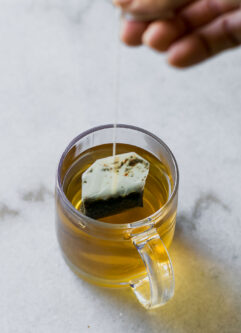Can you compost tea bags?
Wondering whether used tea bags can be composted? This guide to composting single-use tea bags tells you which bags are compostable and which to keep out of your waste pile.
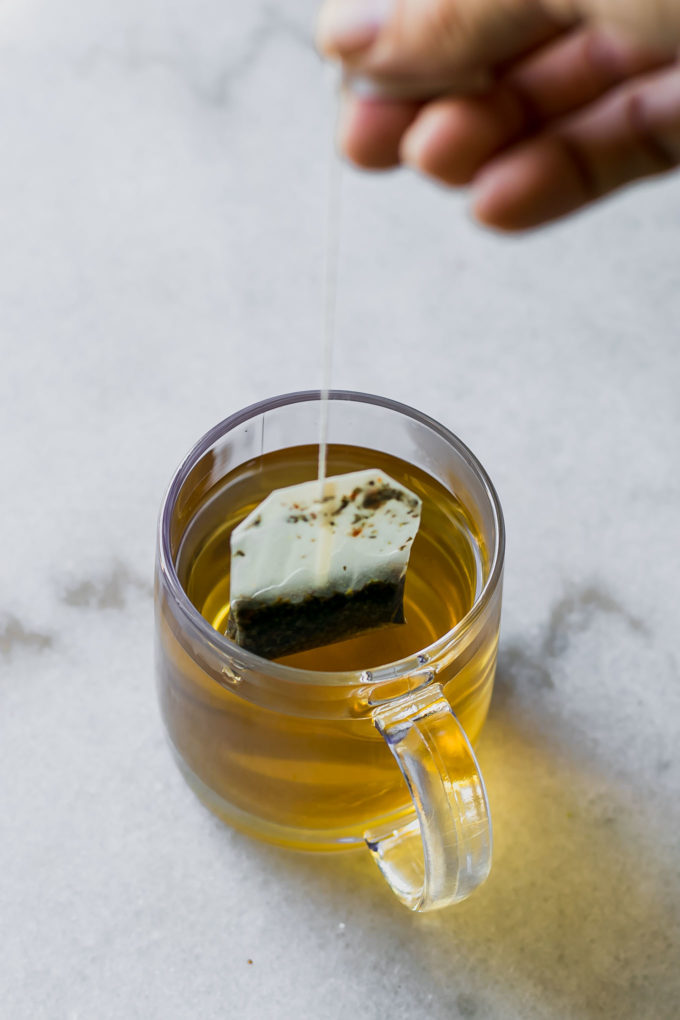
Want to Save This Recipe?
Enter your email & I’ll send it to your inbox. Plus, get new plant-based recipes in your inbox!
By submitting this form, you consent to receive emails from Fork in the Road.
Are you a tea lover who also strives to be eco-friendly in the kitchen? So are we! But before you toss that brew bag into the compost bin, it’s important to know if it contain ingredients that can’t be broken down.
Tea bags that are made from biodegradable materials and are free from plastics and metal are compostable. However, unfortunately many bagged teas are made with small amounts of plastics or small metal staples that cannot go into the compost bin.
To know if you can compost your tea bags, you first must know how tea bags are made, the materials they’re made out of, and which tea bags are able to break down organically.
Ready to learn which tea bags can be composted? Let’s do it!
🍵 What are tea bags made of?
Tea bags are small sachets made with porous materials that keep loose leaves and herbs inside while still allowing hot water to filter through (and make your delicious brew!).
This process allows you to infuse the water with the fragrances and nutritional benefits of whatever combination of ingestible herbs, flowers, tea leaves, and other ingredients are inside the tea bag.
Tea bags can be made of a wide variety of materials and unfortunately the majority are not compostable. However, there are a good amount of biodegradable options out there, so it’s important to have a foundational understanding of how tea bags are made — and more importantly, what they are made of — in order to know if they are compostable.
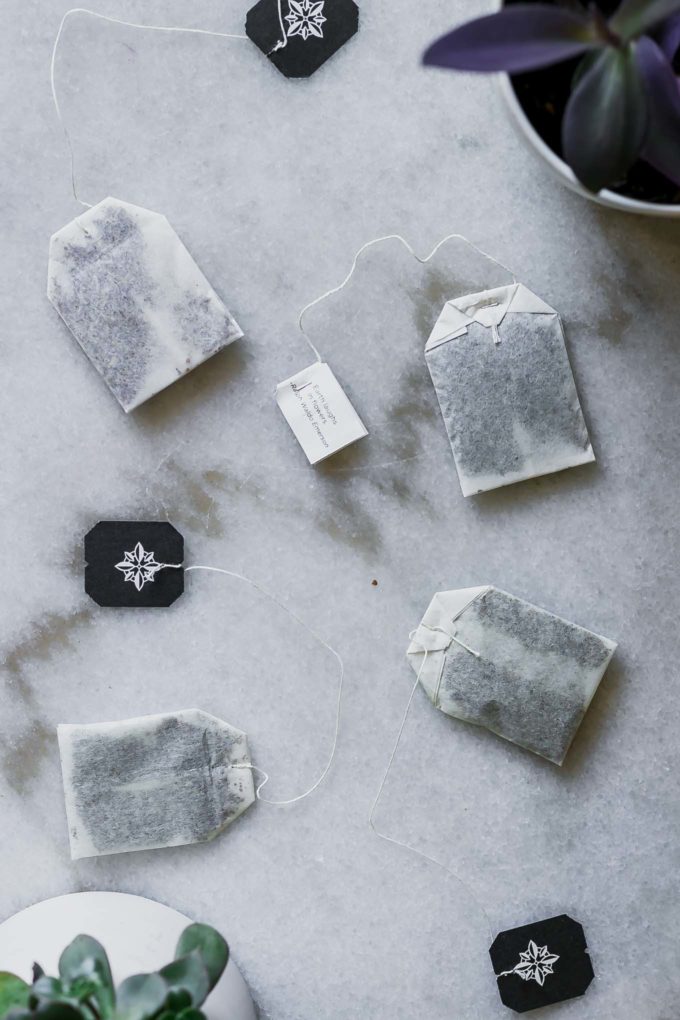
👉 How tea bags are made
There are a few main components when it comes to making tea:
- The tea bag material itself
- Any materials that hold the bag together
- The herbal and leaf infusion that goes inside
- The attached strings, which are often made of cotton
For tea bag materials and the subsequent filler items, there are a variety of options for how each may be composed.
Tea bag materials
The porous material needed for tea infusions can be achieved in a variety of ways, some more eco-friendly than others.
The following are the most common materials that are used to create tea bags:
- Filter paper: Tea bags made from filter paper typically use organic pulp, like Manila hemp, which is molded into the shape of a bag. Filter paper is a biodegradable material and can be composted.
- Plastic: Some bagged teas use special plastic materials that allow water to filter through (however, research shows these materials release billions of microplastic particles into every cup). Plastic is not a biodegradable material and cannot be put in the compost pile.
- Silk: While not as popular as it was in the past due to cost and production, silk is another type of material that is used for making tea bags. Silk is a biodegradable material and can be composted. However, silk tea bags are not suitable for vegans, as silk is made from silk worms.
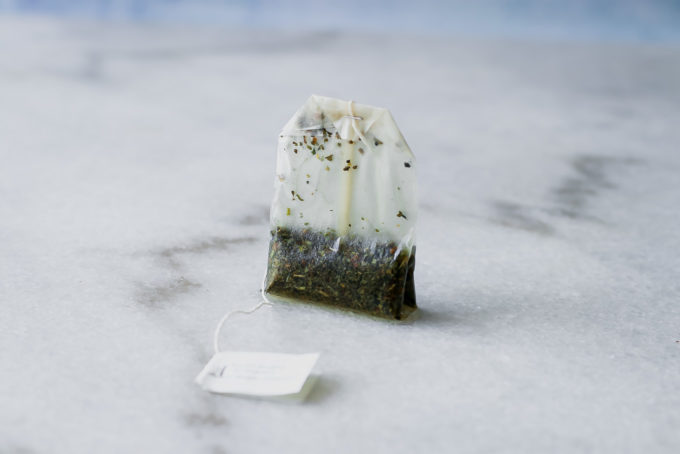
Tea bag sealants
No matter the materials used, all tea bags must use a method for sealing the bag shut to prevent the tea or herbal materials inside the bag from falling out while the tea is steeping. Some of these methods do not affect its biodegradability, but others are not made from organic materials and therefore you cannot put them in the compost pile.
Methods and materials for sealing tea bags:
- Folding: Some tea bags are simply folded in a way that helps them to stay closed when steeping. These types of bags are compostable.
- Tying: Other tea bags use the string as a tie to keep the bag closed. The strings are often made of cotton, which means they can be throw in your home compost.
- Glues: Many popular tea bags use glue to seal the bags and connect the strings. These glues often include plastic sealants like polypropylene, which is biodegradable but takes longer to break down.
- Metal staples: Metal clips or staples are sometimes used to hold tea bags together. The metal cannot be composted, but it can be removed before throwing the teabag into the compost bin.
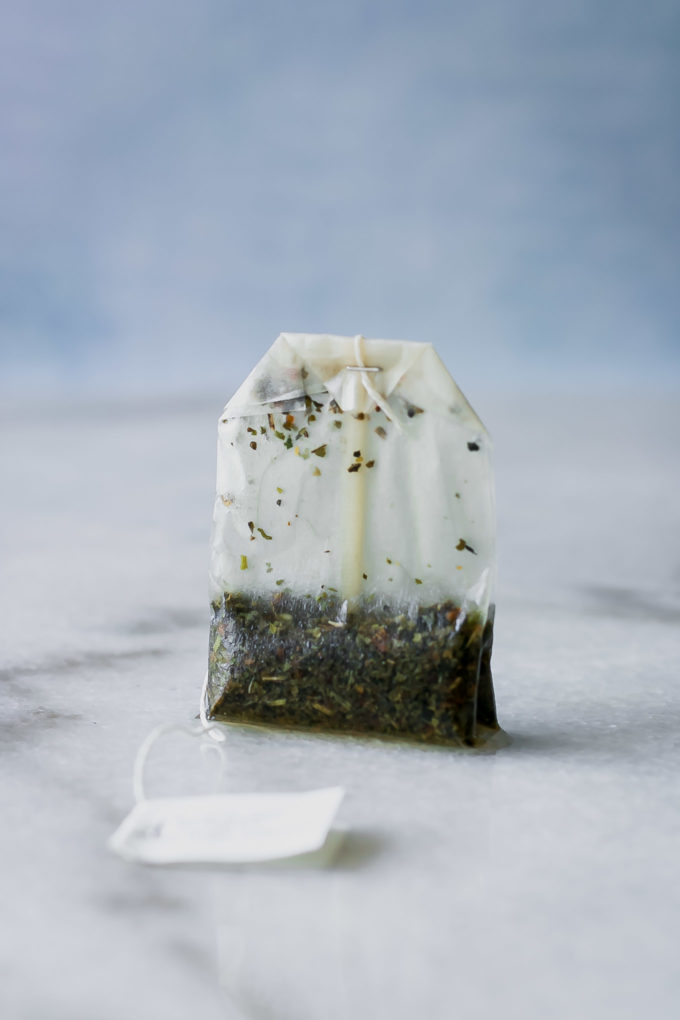
Tea bag filling components (tea + herbs)
The actual components that go into making the signature fragrances and sweet, savory, or bitter tastes of various teas can be quite complex. There are many different mixtures composed of various plant parts ranging from roots to petals.
In any given tea bag, you are likely to find at least one or a combination of the following:
- Tea leaves
- Tea buds
- Flowers
- Roots
- Herbs
The ingredients inside a tea bag are typically all dried organic materials, which means the tea fillings are compostable even if the bag they come in is not. So if you have a tea satchel that is not compostable then you can cut open the bag and compost the tea and herbs inside.
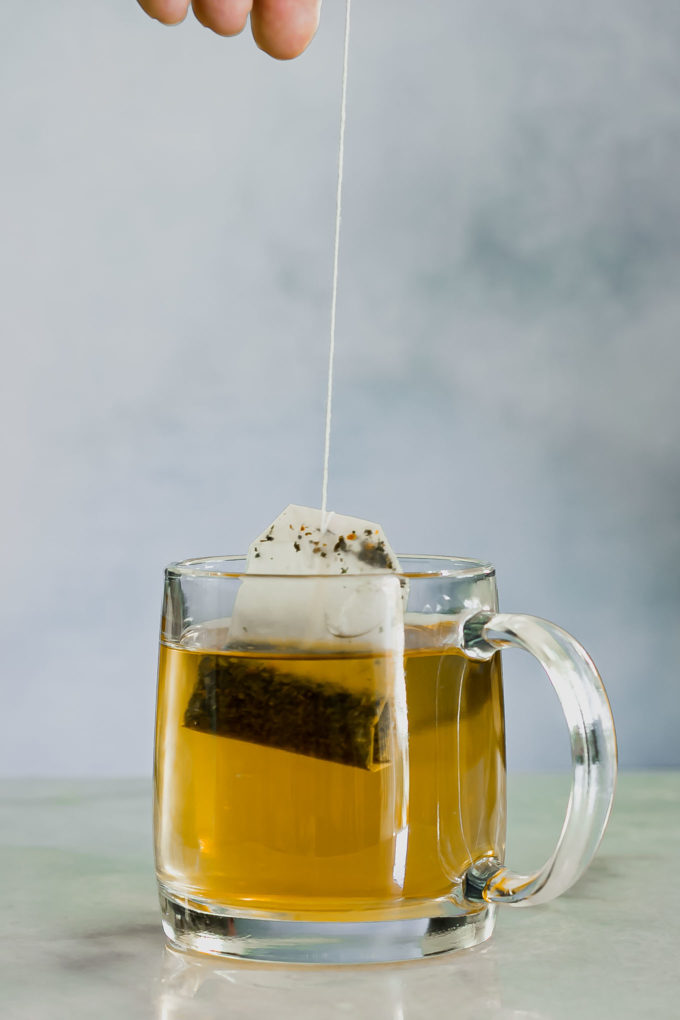
♻️ How tea bags decompose in compost
Tea bags suitable for composting may take anywhere from 3 to 6 months to decompose, and the speed depends on your soil’s particular composition, along with seasonal temperature and how deep your tea bag is buried.
The decomposition process begins the moment you steep your tea bag, as water plays a crucial role in the breaking down of all organic materials. Bacteria and fungi, and occasionally larger organisms such as worms, then continue this process in your compost pile, slowly turning your tea bag into a deconstructed mix of molecules like carbon dioxide.
This is where plastic can get in the way. If your tea bag is made up of a mixture of plastic, the tea bag will hold its shape for many, many years, and will never break down entirely.
Instead, the tea bag will be broken down into tiny microscopic pieces of plastic that eventually enter the watershed, or even become a part of the plants you grow in your garden. You would then consume these plants and the plastic along with it.
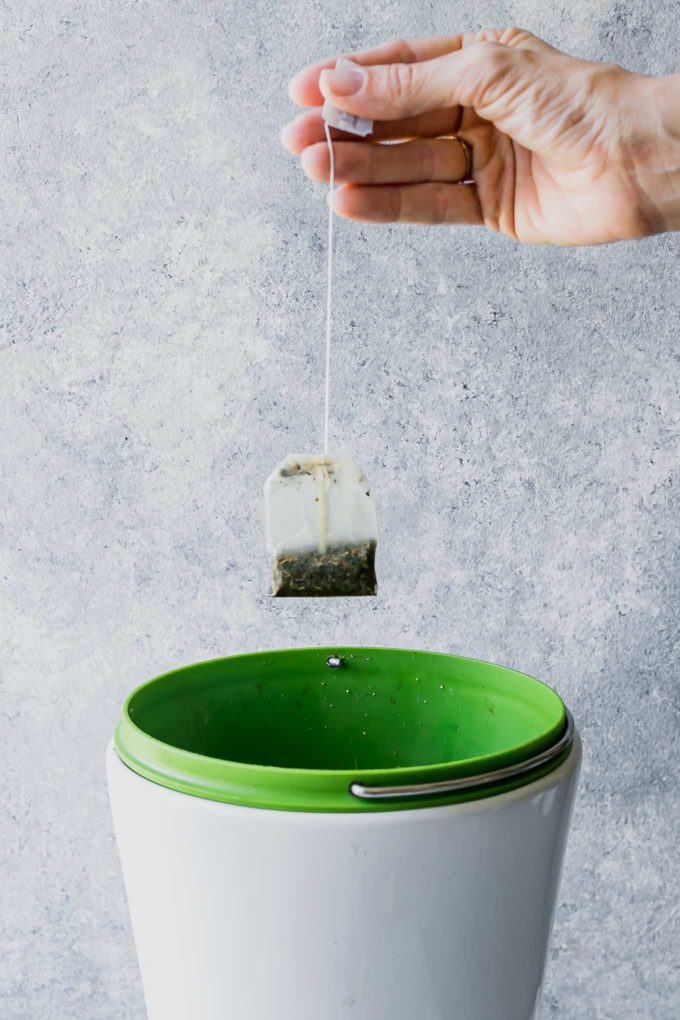
💚 Compostable tea bag brands
While all tea bag filler matter can be composted, not all tea bags should be thrown into the pile. This is because the trace amounts of plastic and metal that some tea bags contain will never break down and can build up harmful toxins in the soil.
While the ideal is to use zero waste methods for brewing tea (see the section below for ideas), there are some pre-made bags that can be thrown into the compost pile.
When searching for compostable tea bags, look for:
- No plastic sealants
- No staples
- 100% plant-based materials
There are a handful of tea brands that are committed to providing 100% plastic-free tea bags that are made with biodegradability in mind. Some of those brands include (affiliate links):
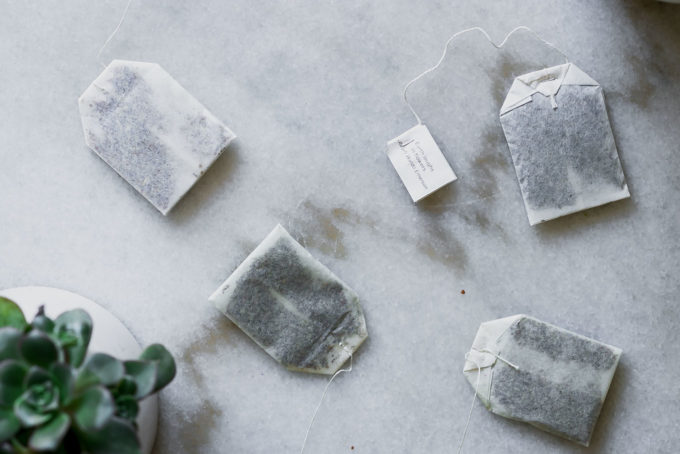
🌱 Eco-friendly alternatives to tea bags
Luckily, steeping your tea can be completely waste-free, and has been so for centuries — without the use of tea bags!
Here are some eco-friendly alternatives to consider (affiliate links):
- Reusable metal loose leaf tea infusers: The best eco-friendly alternative to tea bags is a reusable metal tea infuser. While there are some silicone options available on the market, when exposed to high heat (as is the case when steeping any tea), silicone can leech plastic into your tea water. This is why metal is the best option. It is also longer-lasting and easier to clean.
- Reusable cotton tea bags: If you prefer the familiar look and feel of a typical tea bag, you can find reusable organic cotton tea bags on the market that will last for long periods of time before needing to be composted.
- Teapots: Entire ceremonies are centered around the pouring of tea, and the process has been done for centuries without the need for special, pre-sealed bags. Consider a traditional teapot with a built-in infuser.
- Tea crystals: Tea crystals function similarly to loose leaf but need no container. Instead, the crystals dissolve and infuse your hot water with a mix of extracted flavors and nutrition from raw materials. Try Pique Tea crystals as an on-the-go alternatives to bagged teas.
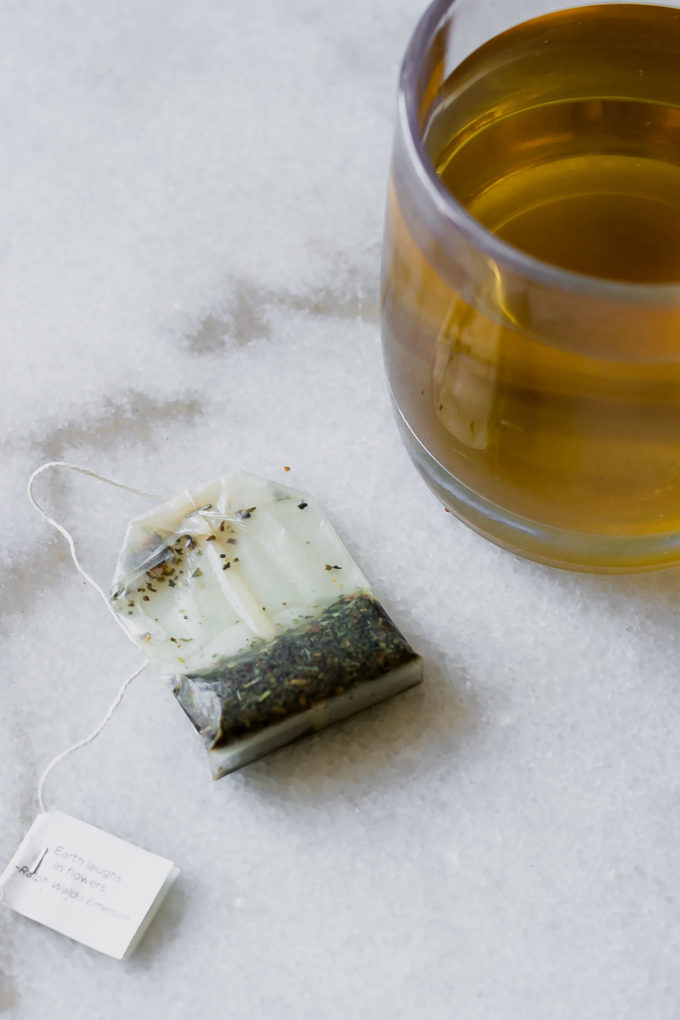
♲ More zero waste kitchen + composting tips
Want more tips for going green in the kitchen? We’ve got you covered with these sustainable kitchen guides:
- Zero Waste Kitchen Start Guide
- Can Paper Towels be Composted?
- How to Clean Glass Jar Labels (Eco-Friendly Method)
- How to Remove Wine Bottles Labels Naturally
- When to Compost Cooked Vegetables (and When to Trash)
- Is Beeswax Wrap More Eco-Friendly Than Plastic Wrap?
Want more inspiration for going green in the kitchen? Join the Green Living Community for plant-based recipes, sustainable kitchen hacks, and get our FREE guide to meal planning to reduce food waste!

